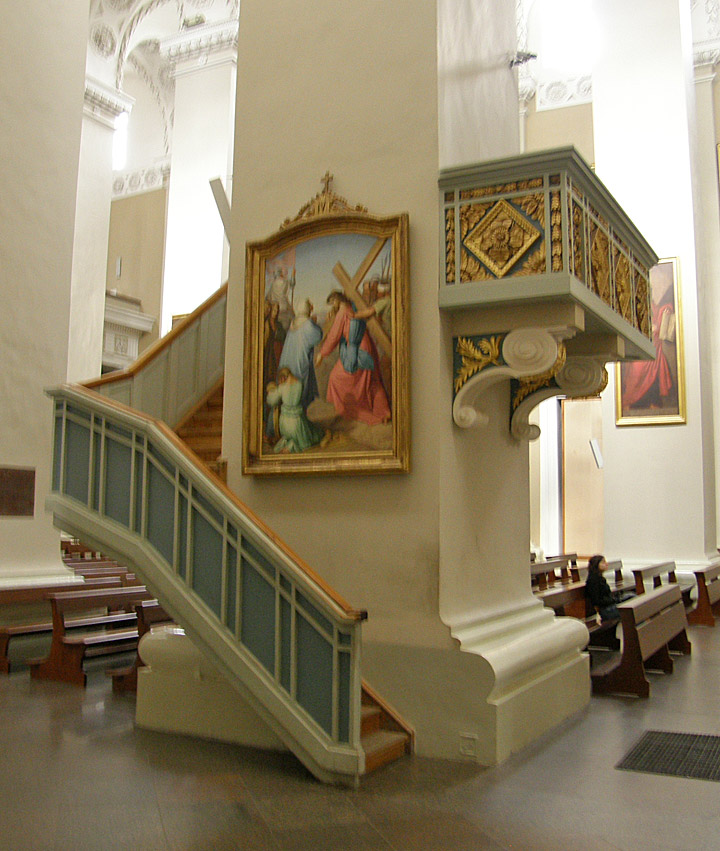

Cathedral
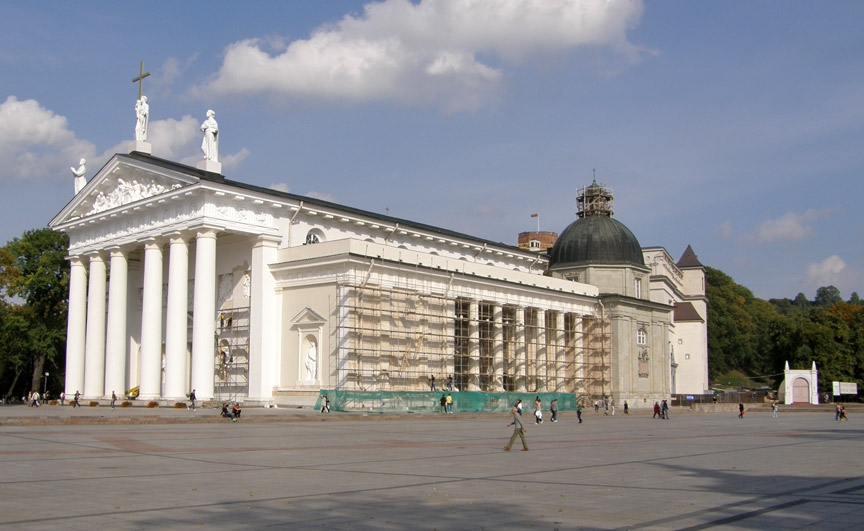
Vilnius Cathedral
Lithuanian Royal Palace behind Cathedral
Vilnius Cathedral (Lithuanian: Vilniaus Šv. Stanislovo ir Šv. Vladislovo arkikatedra bazilika) is the main Roman Catholic Cathedral of Lithuania. It is situated in Vilnius' Old Town, just off the Cathedral Square. It is the heart of Lithuania's spiritual life.

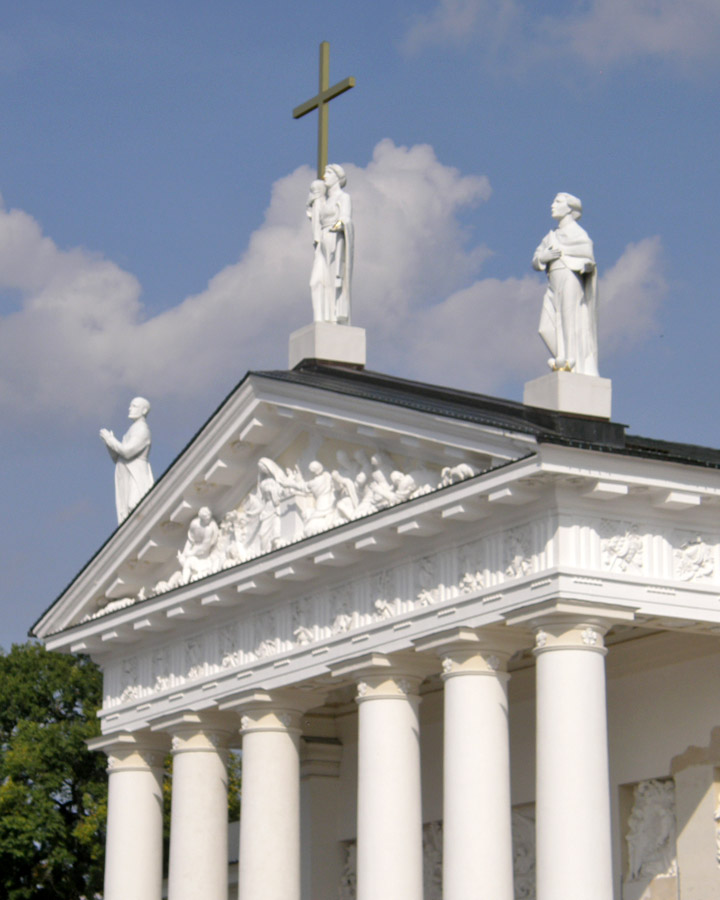
The coronations of the Grand Dukes of Lithuania took place within it. Inside its
crypts and catacombs, many famous people, among them Vytautas the Great (1430),
his wife Anna (1418), his brother Sigismund (Žygimantas) (1440), cousin
Švitrigaila (1452), Saint Casimir (1484), Alexander Jagiellon (1506), two wives
of Sigismund Augustus: Elisabeth of Habsburg (1545) and Barbara Radziwiłł
(1551), as well as others, are interred.
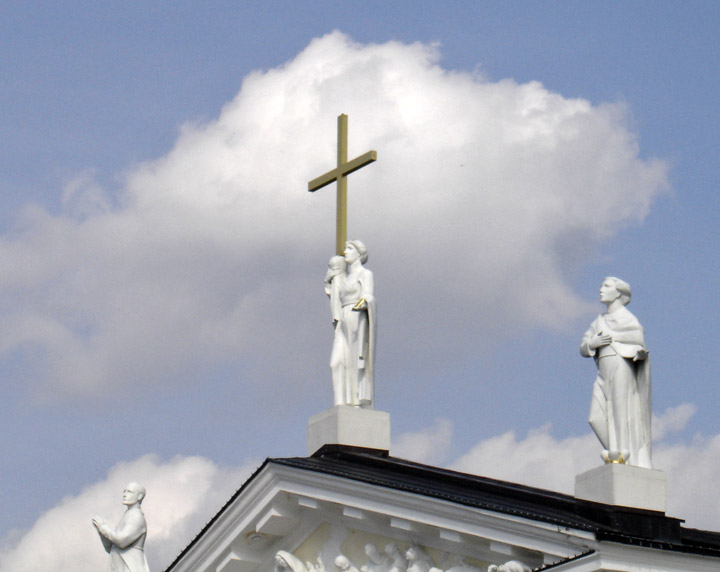
Inside, there are more than forty works of art dating from the 16th through 19th
centuries; both frescoes and small and large paintings. During the restoration
of the Cathedral, the presumed altars of an alleged pagan temple and the
original floor, laid in the days of King Mindaugas baptism, were discovered, in
addition to the remains of the cathedral built in 1387. A fresco dating from the
end of the 14th century, the oldest known fresco in Lithuania, was found on the
wall of one of the underground chapels.
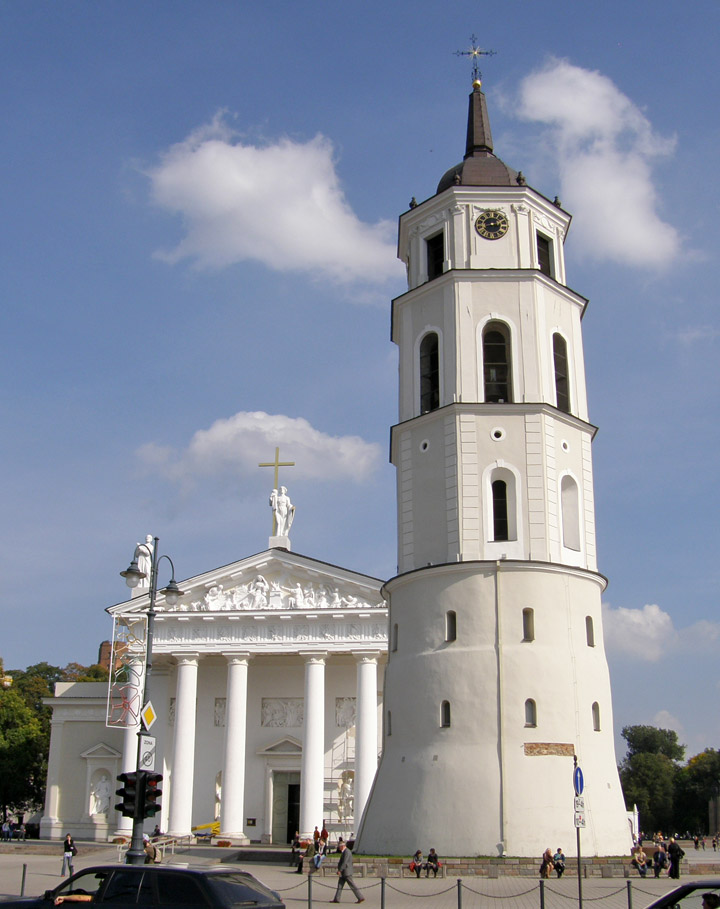
It is believed that in pre-Christian times, the Baltic pagan god Perkūnas was
worshiped at this location. The Lithuanian King Mindaugas built the original
cathedral in 1251 after his conversion to Christianity. After his death in 1263,
it again became a place of pagan worship.
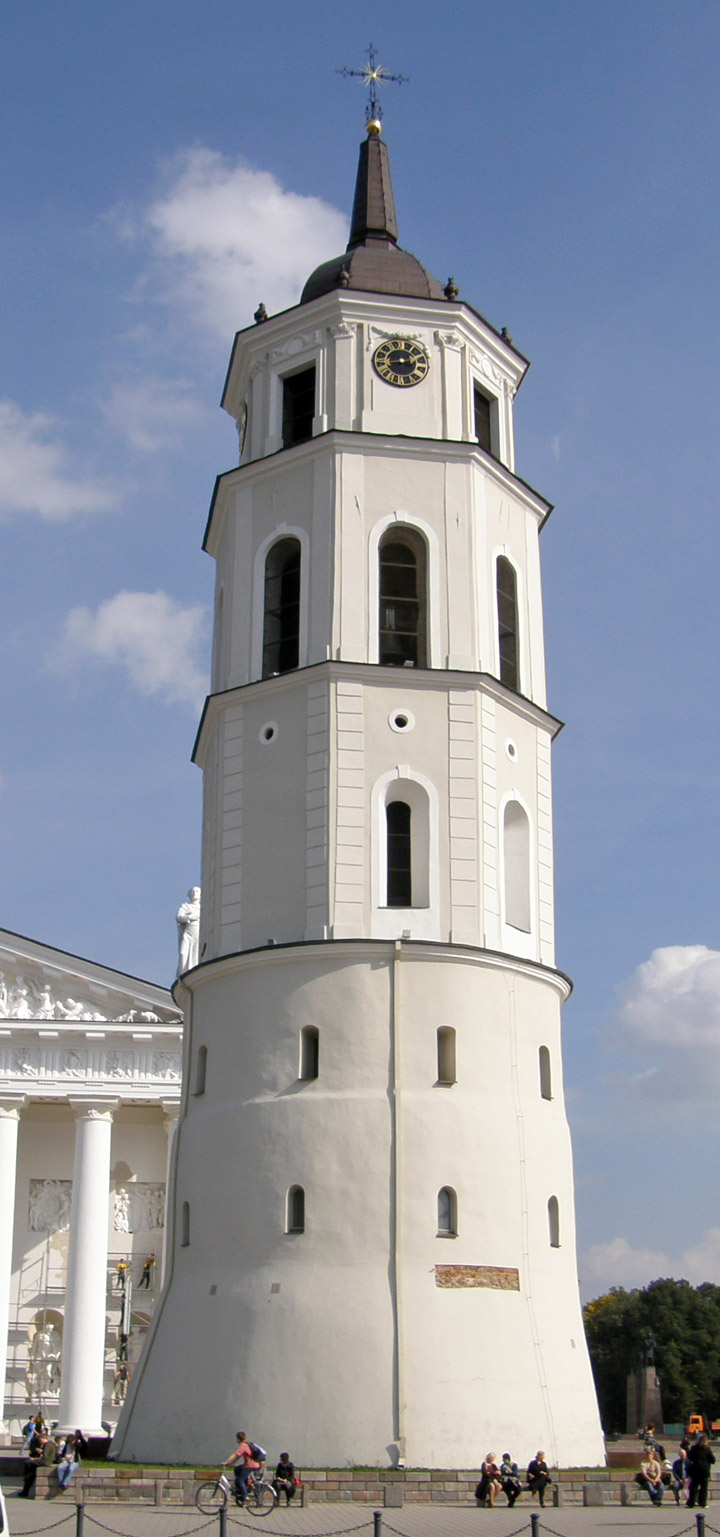
belfry built in 1522 on a 14th century tower of the Lower Castle
In 1387, the year in which Lithuania was officially converted to Christianity, a second Gothic style Cathedral with five chapels was built. The Cathedral burnt down in 1419. In its place Vytautas built a larger Gothic Cathedral. In 1522, the Cathedral was renovated, and the bell tower was built on top of the Lower Castle defensive tower. After the fire of 1530, it was rebuilt again and between 1534 - 1557 more chapels and the crypts were added. The Cathedral acquired architectural features associated with the Renaissance.

In 1529, Sigismund Augustus, was crowned Grand Duke of Lithuania in the
Cathedral. After the fire of 1610, it was rebuilt again, and the two front
towers were added. The Cathedral was damaged during the war of 1655. It was
renovated and decorated several more times.
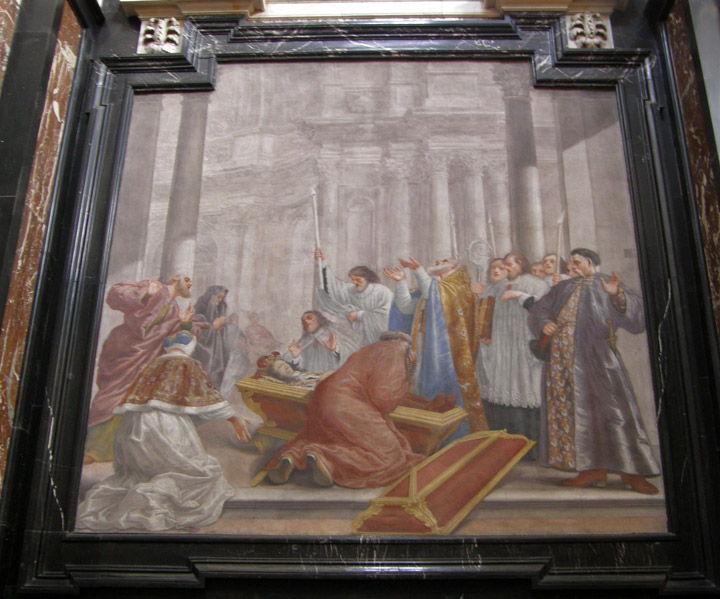
Chapel of Saint Casimir.
Between 1623 - 1636, at the initiative of Sigismund III Vasa, the Baroque style St. Casimir chapel was built of Swedish sandstone. Its interior was reconstructed in 1691-1692 and decorated with frescoes by Michelangelo Palloni, the altar and stuccowork by Pietro Perti.

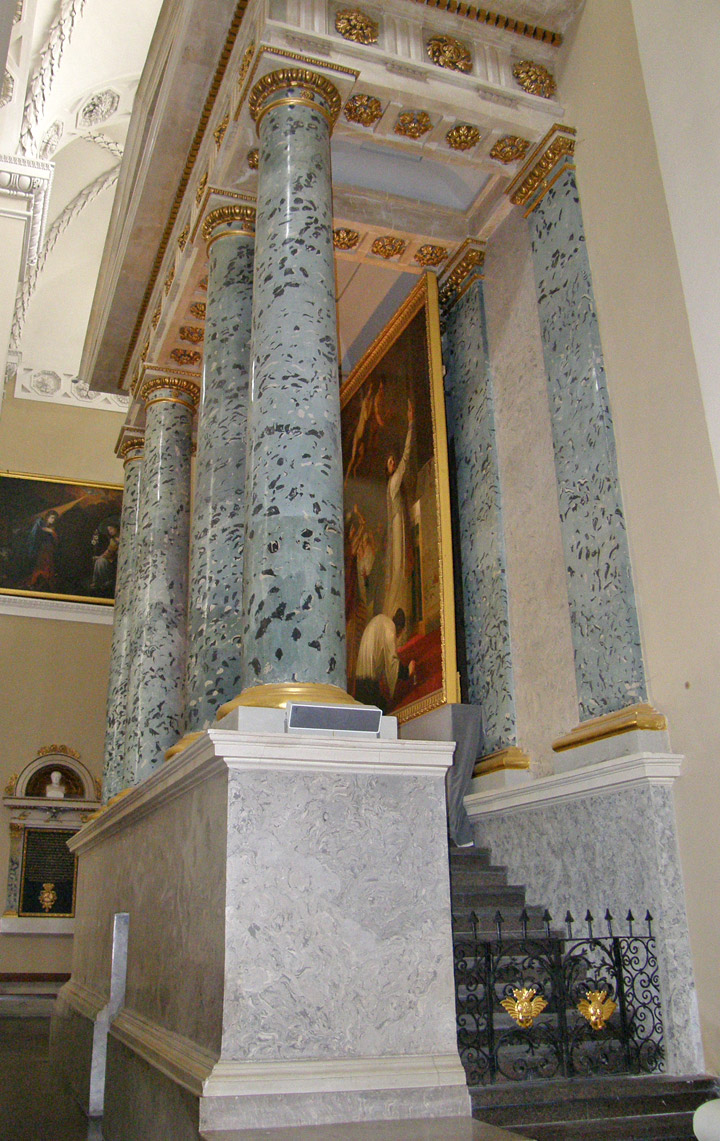
After the damage of 1769, Bishop of Vilnius Ignacy Jakub Massalski ordered the
reconstruction of the Cathedral. The works started in 1779 and were completed in
1783, and the interior was completed in 1801. The Cathedral was reconstructed to
its present appearance according to the design of Laurynas Gucevičius in the
Neoclassical style; the church acquired its strict quadrangular shape and the
plan inherent to local public buildings. Some scholars point to the
architectural resemblance of the cathedral to the works of Andrea Palladio or
see the influence of Gucevičius' tutor Claude Nicolas Ledoux. The influence of
the Palladian architecture is evident in side facades of the building. The lack
of 'purity' of the Classical architecture due to incorporation of Baroque style
sculptures and other elements was later criticised by academical architects,
notably Karol Podczaszyński.
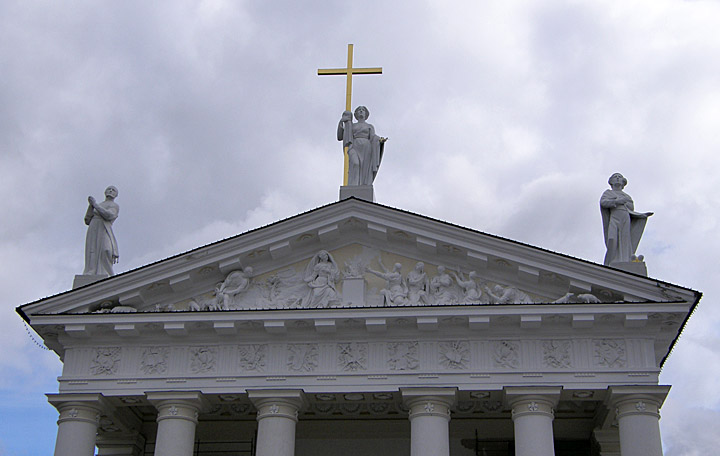
Between 1786 and 1792 three sculptures by Kazimierz Jelski were placed on roof
of the Cathedral - Saint Casimir on the south side, Saint Stanislaus on the
north and Saint Helena in the centre. These sculptures were removed in 1950 and
restored in 1997. Presumably the sculpture of St. Casimir originally symbolised
Lithuania, that of St. Stanislaus symbolised Poland, and that of St. Helena
symbolised Russia's dominance.

Saint Casimir
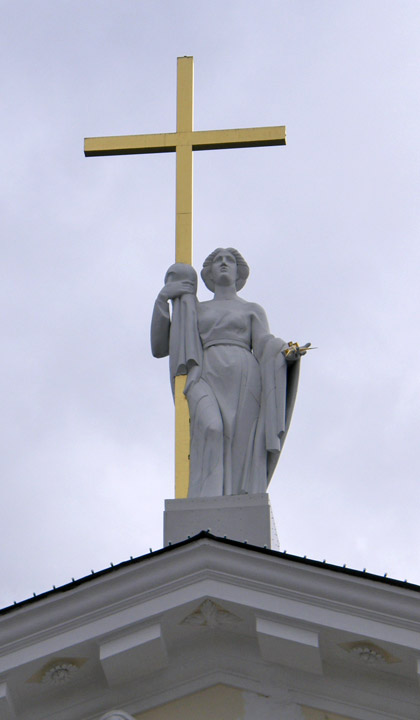
Saint Helena
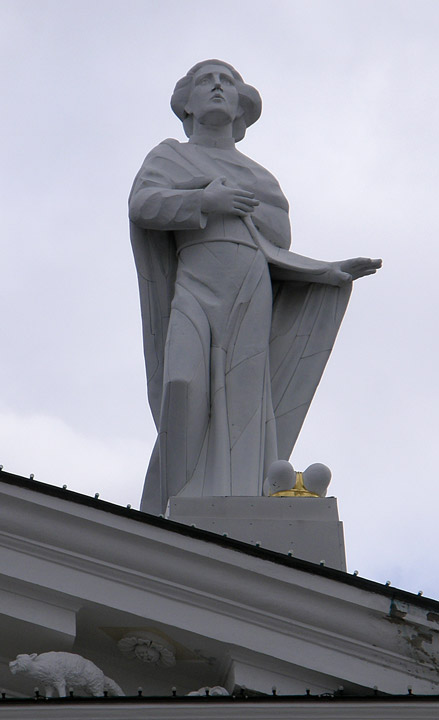
Saint Stanislaus
In 2002 work officially began to rebuild the Lithuanian Royal Palace behind Cathedral. The newly erected palace building will considerably alter the view of the Cathedral. The Cathedral and the belfry have been renovated in 2006 and 2007.
Text from Wikipedia
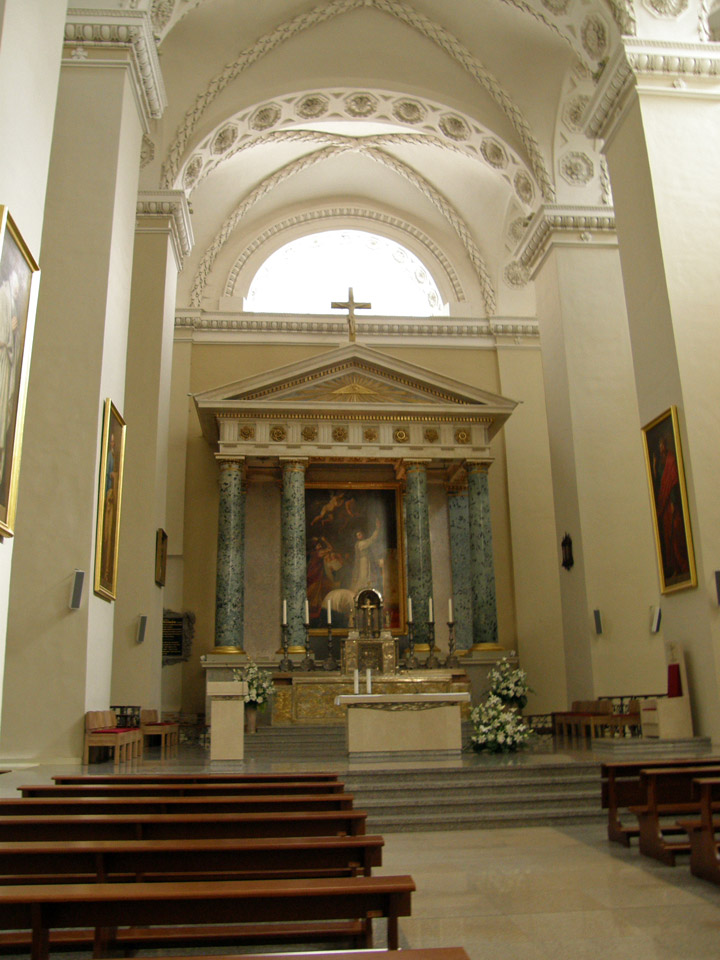

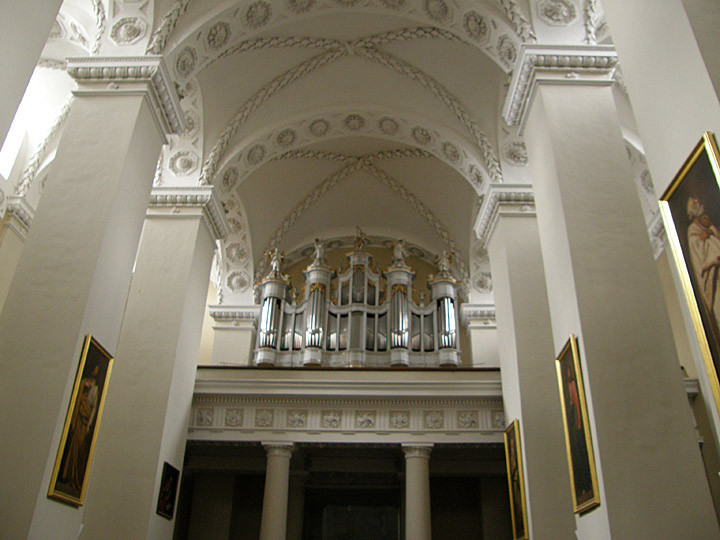


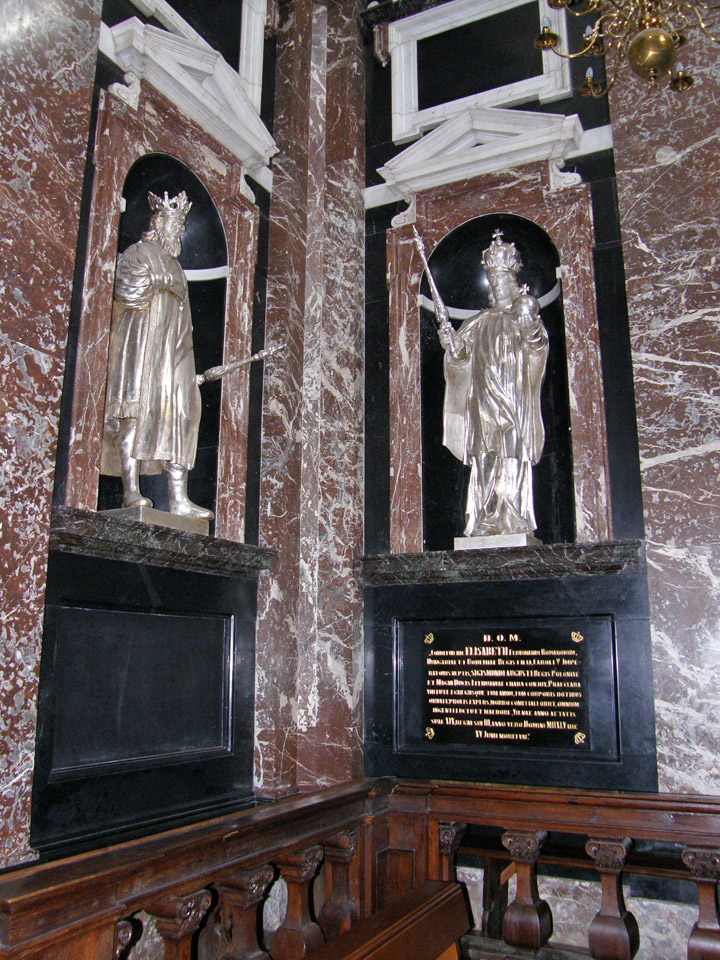



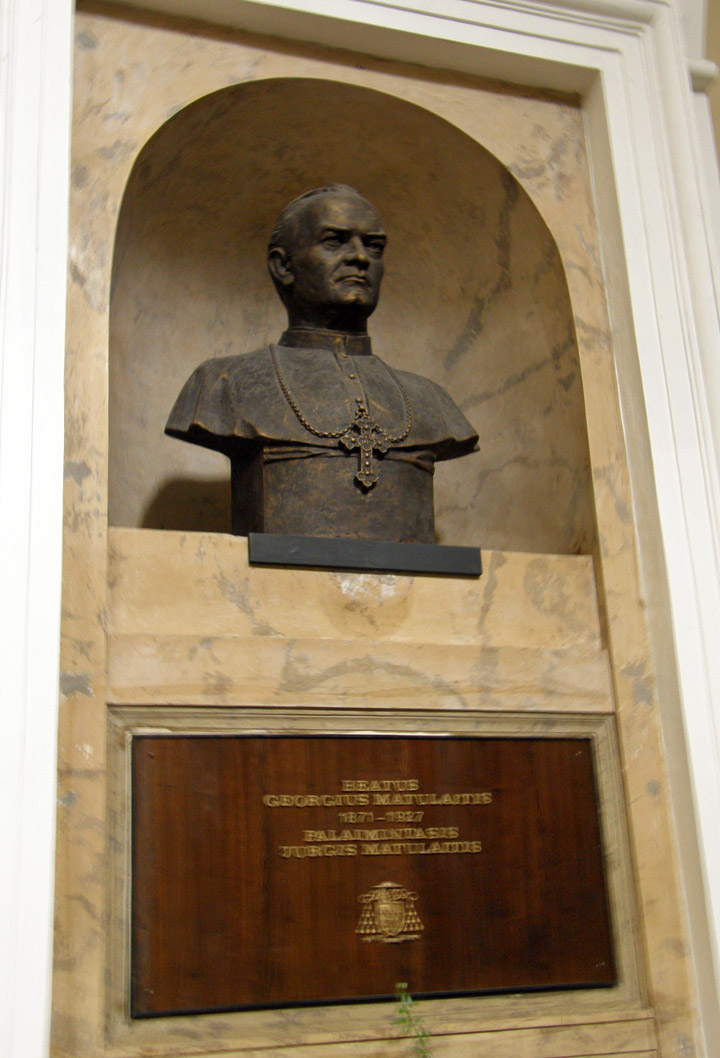
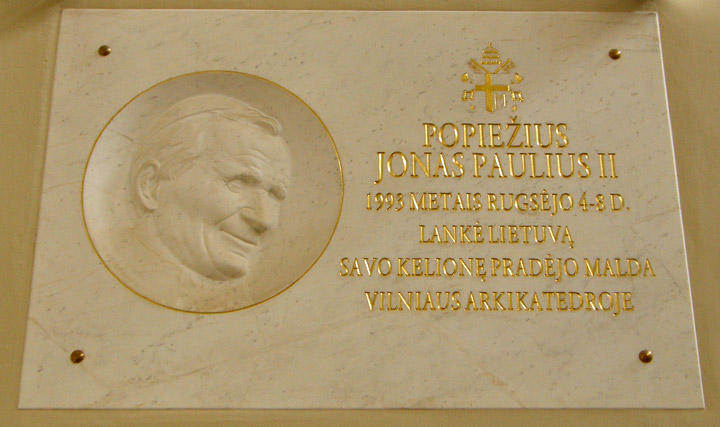
Pope John Paul II
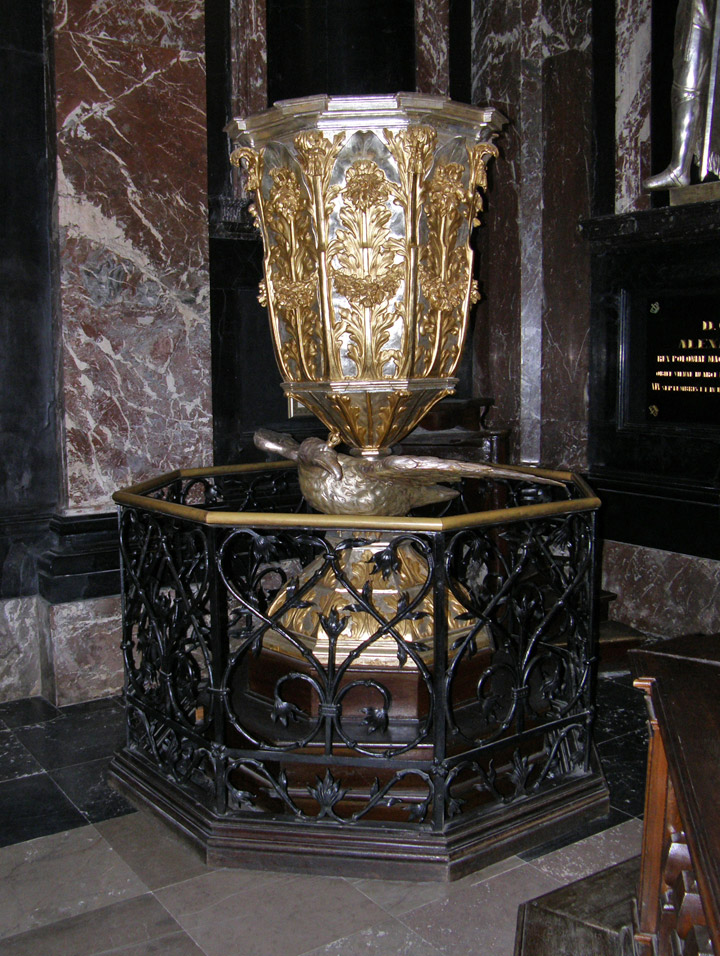
baptismal fount

open confessional
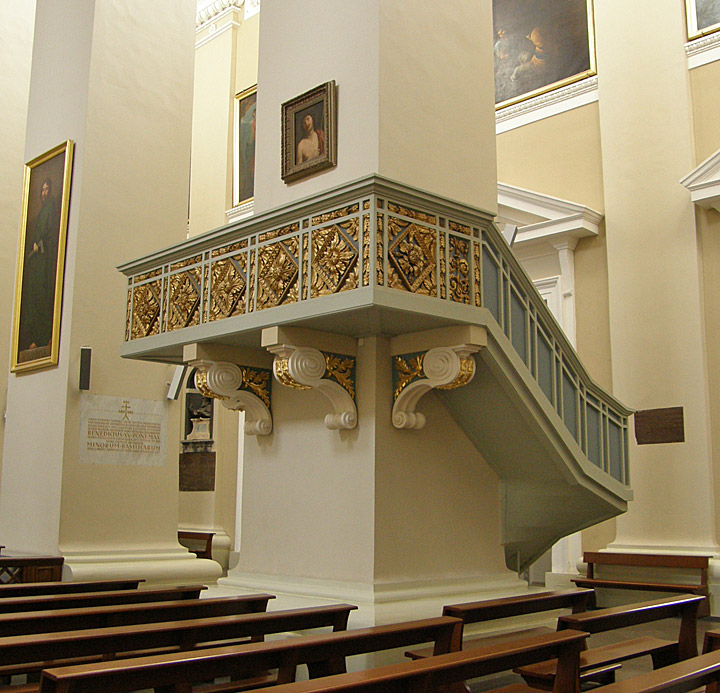
pulpit
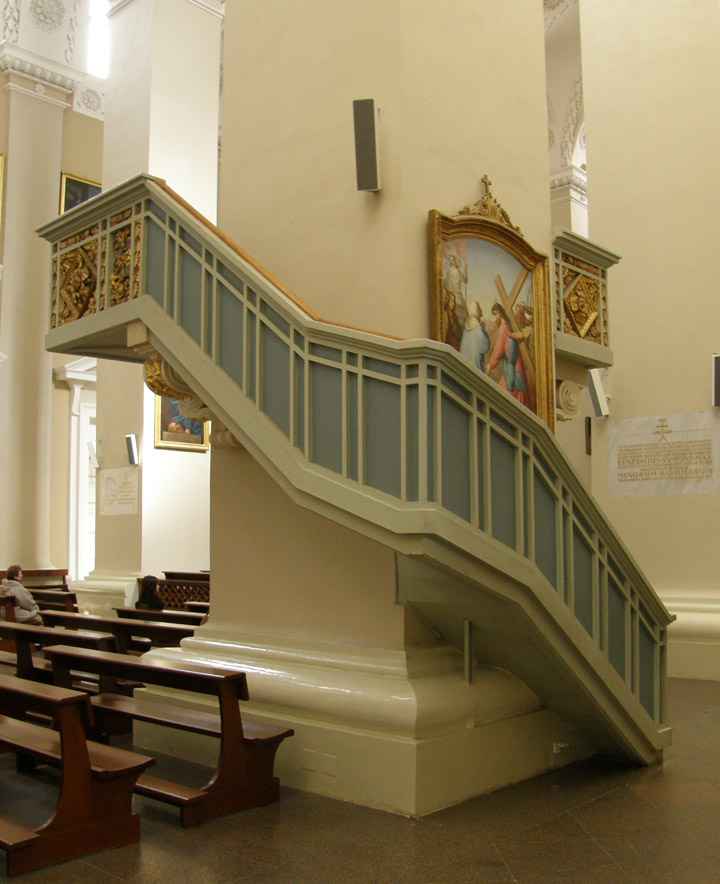
stairway to pulpit
